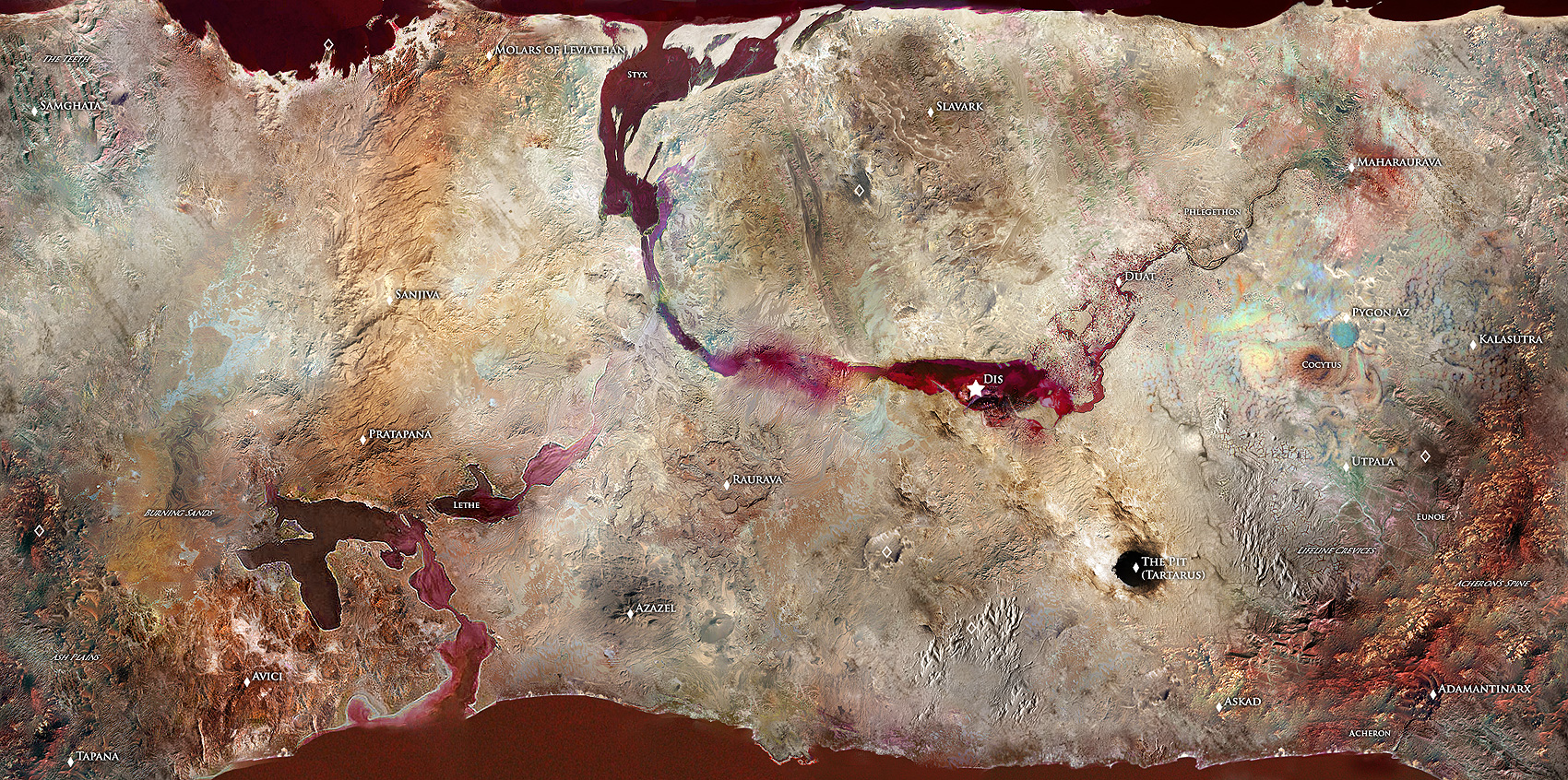Mortal cultures have countless names for the lower planes - called Hell, Hades, the Abyss, Sheol, Gehenna, and Tartarus, to list but a few. Some planes are united by an overarching hierarchy; a few are so riddled by interconnecting portals they might as well be coterminous. But most are disparate worlds tumbling in loose philosophical orbit through the Astral Sea, united only by the lethality of their environments and the active malice of their inhabitants. The latter have been divided into two broad categories: demons, which seek to destroy mortal life, and devils, who want mortals to destroy themselves. While both factions count both inhuman geniuses and mindless drudges among their numbers, demonic plots focus more directly on results, while devils specialize in manipulation and subterfuge.
Warlocks from the ancient and decadent Empires of Sin organized the fiends into the following sub-categories by agenda:
Wrath:
Demons of wrath are the most common, the bloodthirsty hordes that people imagine will ravage the world when the end times come. From the mightiest balors to the lowliest dretches, wrathful demons are straightforward adversaries bringing agony and terror. Lesser demons go on bloody rampages as soon as they can slip from their summoner's control, while demon lords hatch schemes to destroy whole cities in magical conflagrations or open planar gateways to unleash the fury of endless infernal legions.
Devils of wrath specialize in creating conflict, breaking alliances, and encouraging war without restraint as the most direct and profitable solution to all problems. Hellish mercenaries offer their services to expansionist despots and tyrants in need of "peacekeeping" forces. Devlish masterminds offer strategic advice to fascist regimes and inspire the invention or discovery of lethal new weapons.
Demons of wrath charge forward with such hateful ferocity they tear themselves apart with every attack. The massive blades and bone spurs erupting from their bodies cleave through everyone nearby with each swing, the difference between friend and foe lost in a haze of bloodlust. Devils induce a similar state in others with gaze attacks causing madness, rage, and pain that can only be alleviated by harming allies. The element of wrath is fire, which spreads out of control before burning itself out.
Lower planes ruled by fiends of wrath include blasted fields of shrapnel and carnage, lakes of molten iron, and rolling siege engines the size of nations.
Envy:
Demons of envy specialize in possession. Whether out of self-loathing or a simple desire for greater power or skill, mortals can invite demons into their dreams and give up control of their bodies. Most envious demonic schemes involve possessing an influential mortal and establishing a legacy of infernal influence and tainted bloodlines (which are easier to possess in the future).
Devils of envy specialize in Faustian bargains, taking advantage of mortal shortsightedness to trade temporary boons for future deeds with dreadful consequences. Long-term schemes involve shaping cultures and economics to encourage vanity, inequality, and discontent. Information brokers also offer to unearth mortals' darkest secrets for their enemies, again for prices that end up being much dearer than they first seem.
Brutish fiends of envy have attacks that encourage feelings of inadequacy and helplessness by crippling limbs, stealing and copying spells or martial techniques, or sundering critical weapons and implements. Carefully worded curses are favorite tools of the more cerebral. The element of envy is acid, which scars and disfigures the vain and ruins equipment.
Realms of envy are copied after pristine grottoes and heavenly cities, but seething with barely hidden corruption and decay. Beautiful facades sink into virulent swamps, while outside the crumbling city walls a thin carpet of loam conceals mile-deep pits of silverfish and worms.




